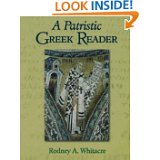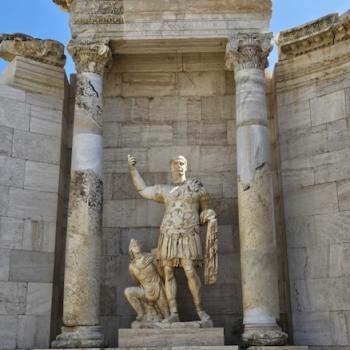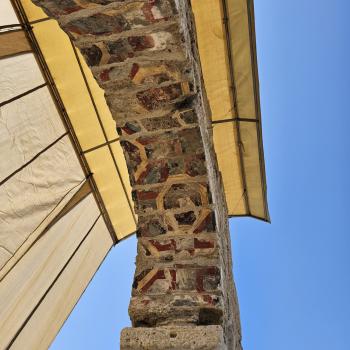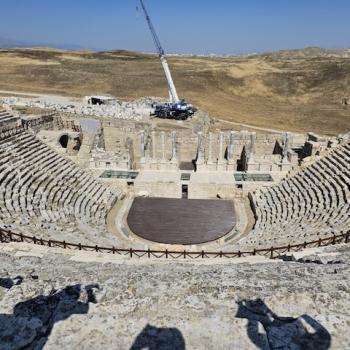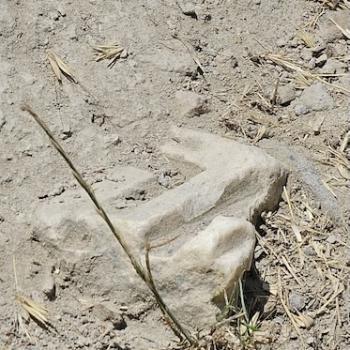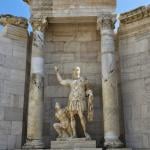Here below is a helpful post by Larry Hurtado. He does not mention what I would consider the best Intro to getting into the Fathers, namely my former GCTS classmate Rod Whitacre’s Patristic Greek Reader published in 2007 by Baker, but otherwise this is a helpful summary. I should also add, that new unpublished works by Lightfoot, including essays on the Apostolic Fathers, will soon be forthcoming from yours truly and Todd Still under the title The Lightfoot Legacy. Stay tuned.
—-
The term “The Apostolic Fathers” designates a body of early Christian writings that, next to the NT, include some of the earliest most important and fascinating texts from ancient Christian circles. Most recent editions include fifteen texts, plus fragments ascribed to Papias cited in other early texts. Although of considerable historical significance, these writings (which largely are dated to the late first and early/mid second centuries CE) have been overlooked far too much, even in scholarly circles, and certainly among the wider public. But there are signs of a renewed interest, and these comprise a number of recent publications that offer help in becoming acquainted with these early texts.
The texts include “1 Clement” (a letter from the Roman church to the Corinthian church typically dated in the 90s CE), “2 Clement” (and early Christian homily-type text), letters of Ignatius of Antioch (early 2nd century), the “Martyrdom of Polycarp” (traditionally regarded our earliest extant martyrdom-account), the “Didache” (a fascinating text that may include traditions/portions from the first century CE), the “Epistle of Barnabas”, “The Shepherd of Hermas” (a complex texts purporting to reflect visionary experiences of a Hermas of Rome), the “Epistle of Diognetus” (an early apologetic work). These texts show early Christians working out how to live as a small and vulnerable sect in the larger Roman world.
There are now two recent hand-editions of the texts: The Apostolic Fathers, Loeb Classical Library, ed. Bart D. Ehrman (2 vols.; Cambridge, MA: Harvard University Press, 2003); and The Apostolic Fathers: Greek Texts and English Translations, Third edition, ed. Michael W. Holmes (Grand Rapids: Baker Academic, 2007). Both give Greek text and English translation on facing pages, with brief introductions, and some concise textual notes, plus select bibliographies. Scholars and serious students will want to consult both, but if you have to choose a purchase, for my money, the Holmes edition is preferable. (In price, and in being a handy one-volume format, aside from other features.)
The texts were all written in “Koine” Greek, much of the vocabulary shared with the NT. To assist those who come to these texts via NT Greek, there is now a very helpful tool: A Reader’s Lexicon of the Apostolic Fathers, eds. Daniel B. Wallace, Brittany Burnette & Terri Darby Moore (Grand Rapids: Kregel Academic, 2013). For each text, this reader’s lexicon gives definitions of all words occurring fewer than thirty times in the Greek NT, or not in the Greek NT, laid out chapter-by-chapter (and, where appropriate, verse-by-verse). Those who have begun to read in the Greek NT will find this a very useful help in reading the Apostolic Fathers, without having to look up unfamiliar words in a full Greek lexicon. (Of course, the standard reference lexicon for the Greek NT, the Bauer-Arndt-Gingrich-Danker lexicon, includes all vocabulary in the Greek NT and the Apostolic Fathers, but it’s a good bit more cumbersome to have to refer to it frequently simply in the effort to read a text.)
There are also a couple of recent simple introductions to these texts: Clayton N. Jefford et al., Reading the Apostolic Fathers: An Introduction (Peabody, MA: Hendrickson, 1996), and more recently Paul Foster (ed.), The Writings of the Apostolic Fathers (London: T&T Clark, 2007). Each of these works addresses the contents and all critical questions about the texts individually, as well as helpful bibliographies for further reading/research.
Still unsurpassed, however, for all serious scholarly on these texts is the five-volume work by J. B. Lightfoot, The Apostolic Fathers (London: Macmillan, 1889-1890). I have a 1981 reprint edition produced by Hendrickson, but I can’t tell whether it’s now in print by anyone. This work is simply amazing in depth of analysis, and remains essential in advanced research on early Christianity.
But for anyone simply interested in seeing how early Christianity developed, especially in that crucial second century CE, “The Apostolic Fathers” make for fascinating reading, and these welcome recent publications are designed to promote and facilitate this.


